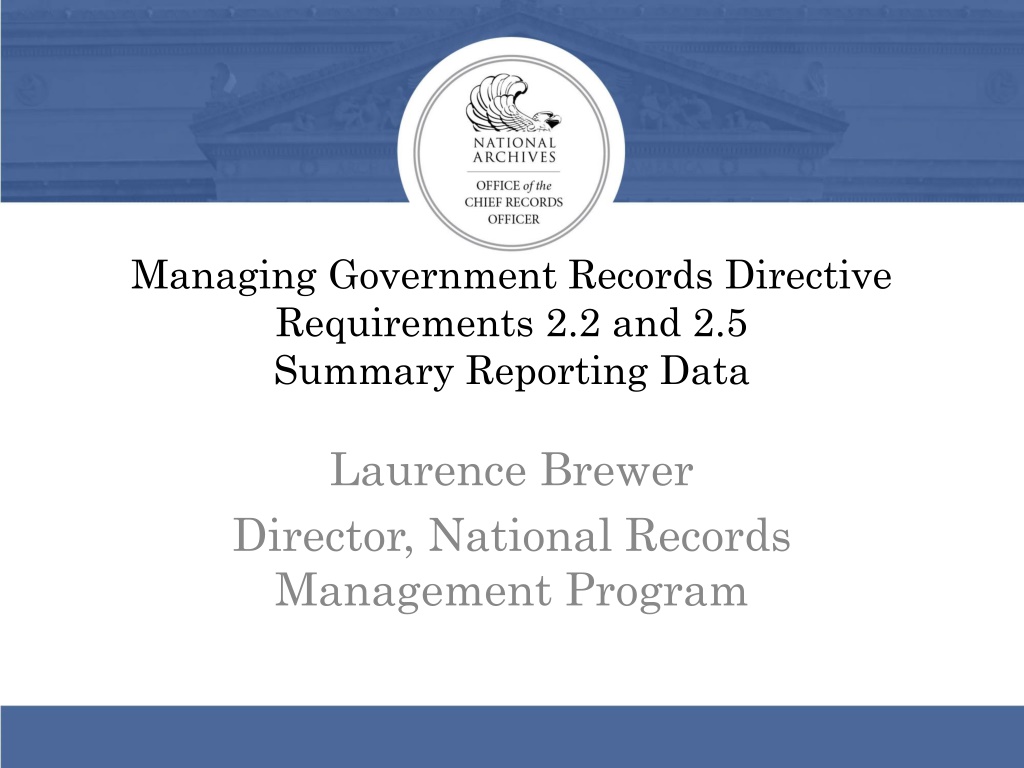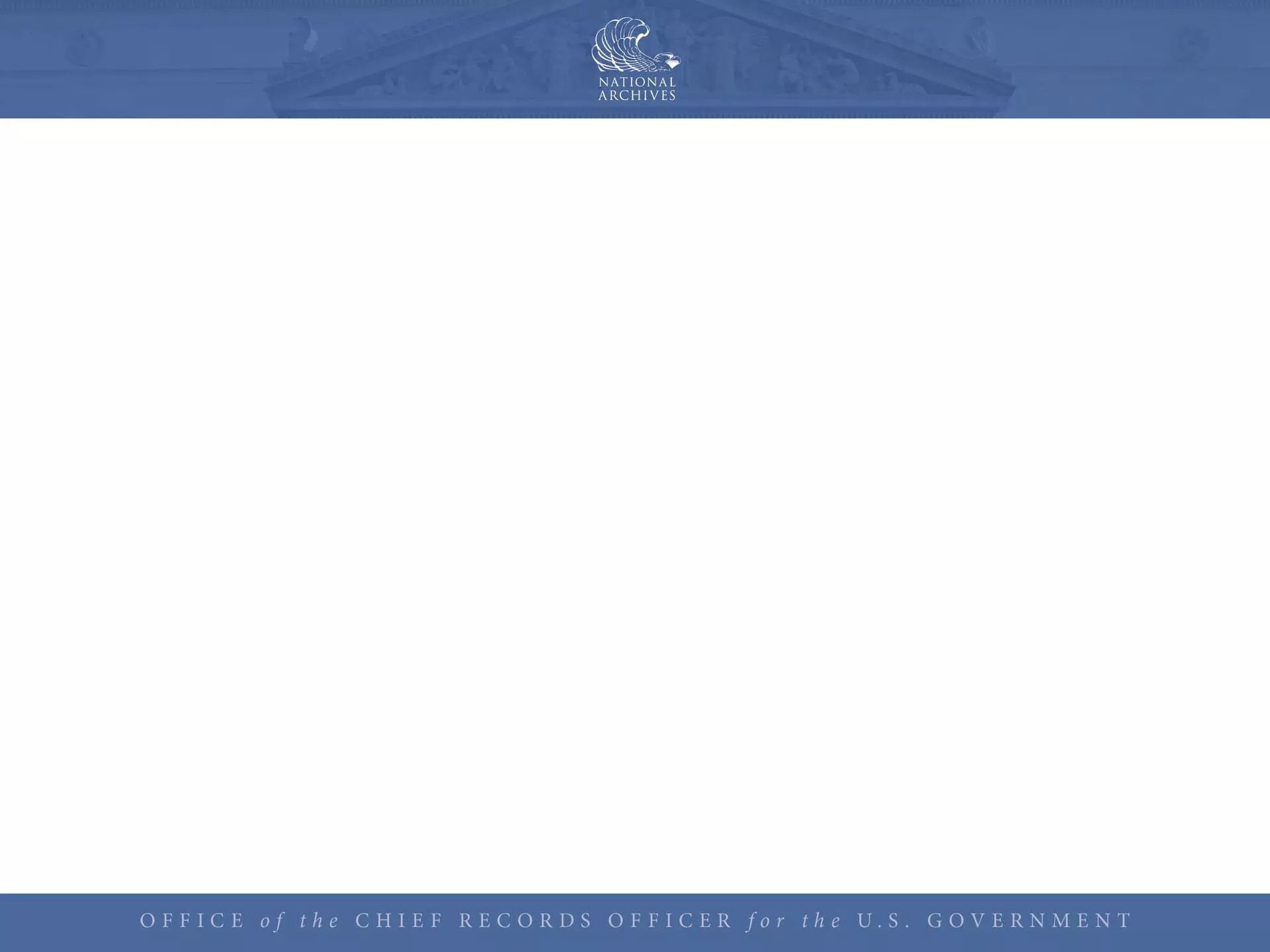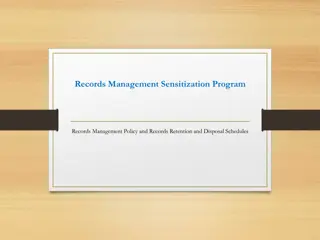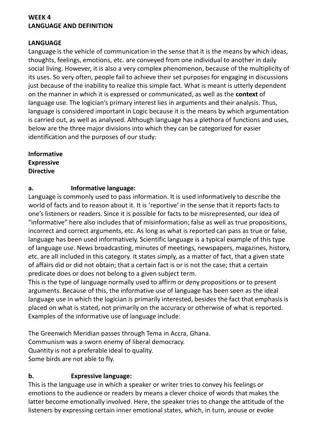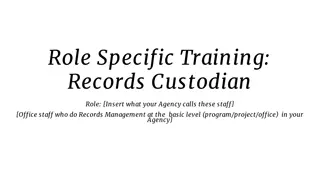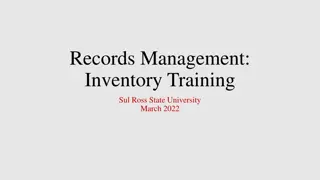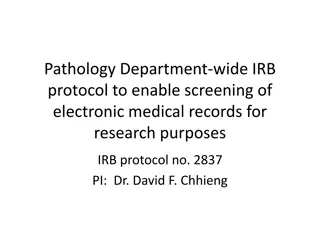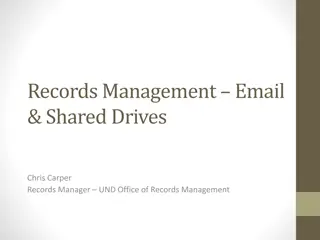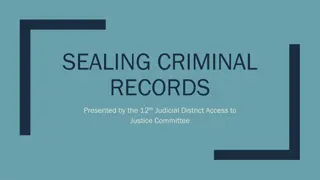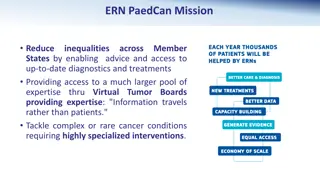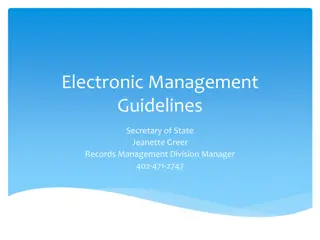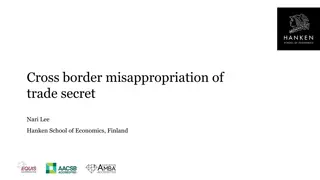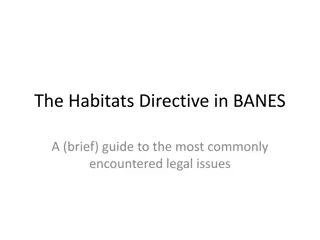Managing Government Records Directive Requirements Summary
Government directive requirements 2.2 and 2.5 summary reporting data related to managing government records, including reporting on permanent records and agency custody, response statistics, volume of 30-year-old records, and current status of data received and actions taken.
Download Presentation

Please find below an Image/Link to download the presentation.
The content on the website is provided AS IS for your information and personal use only. It may not be sold, licensed, or shared on other websites without obtaining consent from the author.If you encounter any issues during the download, it is possible that the publisher has removed the file from their server.
You are allowed to download the files provided on this website for personal or commercial use, subject to the condition that they are used lawfully. All files are the property of their respective owners.
The content on the website is provided AS IS for your information and personal use only. It may not be sold, licensed, or shared on other websites without obtaining consent from the author.
E N D
Presentation Transcript
Managing Government Records Directive Requirements 2.2 and 2.5 Summary Reporting Data Laurence Brewer Director, National Records Management Program
Background NARA/OMB M-12-18, Managing Government Records Directive, included the following two requirements: 2.2: Report on permanent records in FRCs (Part A) and agency custody (Part B) that are 30 years old or older 2.5: Report on agency records in FRCs (Part A) and agency custody (Part B) that are unscheduled. 2
Process Reporting requirement and template for Part B was distributed to agencies on May 28, 2013 Agencies were directed to submit reports to NARA via the annual RMSA Deadline was extended to the end of February 2014 due to Government shutdown and additional follow up 3
Current Status Developed statistics on data received Report and follow up actions being reviewed internally We expect to continue requesting data on unscheduled records as part of the RMSA Considering next steps for 30 years old or older permanent records 4
Response: 30 Year Old Records 2.2 Part B Responses by Category All Agencies 42 48 No Response: 18% Submitted Spreadsheets: 43% No Records: 23% 63 Other Responses: 16% 115 5
Response: 30 Year Old Records 48 (18%) agencies provided no response to the 2.2 Part B Requirement 115 (43%) completed and submitted the spreadsheet 63 (23%) reported having no records that meet the 2.2 Requirement 42 (16%) reported other responses (e.g., insufficient agency resources, do not know, in progress 6
Volume: 30 Year Old Records Preliminary Volume: 2.3 Million CF In FRCs: 1.3 Million CF Agency Custody: 537,292 CF Possible Remaining: 420,489 CF 7
Volume: 30 Year Old Records Part A (FRCs) Part A (FRCs) Part B (Agency Physical Custody) 537,292 CF Part B (Agency Physical Custody) 537,292 CF Estimated Additional Volume Estimated Additional Volume 420,489 CF Total: Total: 1,356,555 CF 1,356,555 CF 420,489 CF 2,314,336 CF 2,314,336 CF 8
Volume: 30 Year Old Records Top 5 agencies with the largest volume of records identified on the Part A Part A spreadsheet: 1. Immigration and Naturalization 390,068 CF 2. Veterans Benefits Administration 376,021 CF 3. Bureau of Indian Affairs 97,864 CF 4. Patent and Trademark Office 39,778 CF 5. Defense Intelligence Agency 17,250 CF TOTAL: 1,356,555 CF TOTAL: 1,356,555 CF (not including records in STL) 9
Volume: 30 Year Old Records Top 5 agencies with the largest volume of records identified on the Part B Part B spreadsheet: 1. U. S Forest Service 27,000 CF 2. National Geospatial Intelligence Agency 20,379 CF 3. Department of Justice: Federal Bureau of Investigation 54,549 CF Headquarters/Department Level 363,027 CF 4. Department of Energy National Nuclear Security Administration 12,237 CF Headquarters/Department Level 12,816 CF 5. National Aeronautics and Space Admin 13,050 CF TOTAL: 537,292 CF TOTAL: 537,292 CF 10
Additional Details Data reported for 2.2 includes both textual and non-textual records Volume based on age of the records and not on their eligibility for transfer Data quality issues suggest need for validation 11
Next Steps The project team is continuing to review the data received and identifying where additional follow up and/or further clarification is needed The team will adopt criteria and identify the top priorities for accessioning In 2015, the team will develop transfer plans with agencies to accession the eligible priority records into the National Archives. 12
Response: Unscheduled Records Agency Response Unscheduled Records 25 26 107 Spread Sheets Returned to NARA Spread Sheets Not Returned No Unscheduled Records (RMSA) Compiling Data (RMSA) 160 13
Response: Unscheduled Records 160 (60%) agencies provided no response to the 2.5 Part B Requirement 107 (40%) completed and submitted the spreadsheet 51 of the responding agencies did not return a spreadsheet, indicating they did not have any unscheduled records, were working on it, etc. 14
Unscheduled Records Series Types of Unscheduled Series 28 724 Textual Electronic Multiple 3306 1921 Special Media 15
Unscheduled Records Series By format, the unscheduled records series in agency custody (Part B) include: 3,306 textual series 1,759 electronic series 725 mixed series 18 series of motion and stills 10 series of maps, charts 16
Unscheduled Records Series For electronic series, the agencies reporting the highest volumes: National Guard Bureau 633 Series General Services Admin 351 Series DOJ Headquarters EOUSA 126 Series 111 Series 17
Next Steps Individual agency reports will be shared with your appraisal archivist, who will work with you on plans to address these unscheduled records Other potential actions may include: Webinar on inventorying records Sharing best practices 18
